Extreme temperatures and humidity affected millions of people in the Midwest, Great Plains, and South in August 2023.
High heat and humidity have blanketed numerous states in the U.S. South, Midwest, and Great Plains in late August of 2023. This is due to a large area of high pressure and warm air, commonly referred to as a heat dome, which settled over the interior United States.
Temperature Modeling and Records
The map above shows air temperatures modeled at 2 meters (6.5 feet) above the ground at about 3 p.m. Central Time on August 23, 2023. It was generated by merging satellite observations with temperatures predicted by a version of the Goddard Earth Observing System (GEOS) model, which uses mathematical equations to represent physical processes in the atmosphere. The darkest reds indicate areas where temperatures exceeded 104°F (40°C).
Many areas across the middle of the country sweltered under record or near-record heat in this stretch of weather. New Orleans, Louisiana, tied its previous record high, set in August 1980. The temperature topped out at 102°F (39°C) on August 23 at the Louis Armstrong New Orleans International Airport. Houston, Texas, nearly tied its record of consecutive days over 100°F (38°C), while Sioux Falls, South Dakota, tied their hottest daily low temperature of 81°F (27°C).
Impact of Humidity and Global Heatwaves
High humidity, owing to moisture drawn from the Gulf of Mexico, contributed to the extreme nature of the heat wave. Chicago, Illinois, experienced a heat index of 116°F (47°C) on August 23, which ties its second highest on record. The higher the heat index, which indicates how hot it feels when accounting for both temperature and relative humidity, the harder it is for the human body to cool itself. Commuter trains in the city had to run slower due to heat-related stress on the tracks. More than 100 million people may have been exposed to dangerous heat and humidity for multiple days, according to one analysis by The Washington Post.
The heat dome in the United States is but one of several bouts of hot weather occurring around the world. Another stretch of extreme heat is gripping southern Europe, while scores of new temperature records are being set in Japan. Even winter weather in the Southern Hemisphere is unusually warm.
Forecast and Relief
For those in the U.S., relief might be on the horizon. A cold front is expected to alleviate much of the Midwest’s heat by August 26, as per the National Weather Service’s Weather Prediction Center. Nevertheless, regions like the southern plains and the Gulf Coast might endure the scorching temperatures for a few more days.
NASA Earth Observatory image by Lauren Dauphin, using GEOS-5 data from the Global Modeling and Assimilation Office at NASA GSFC.

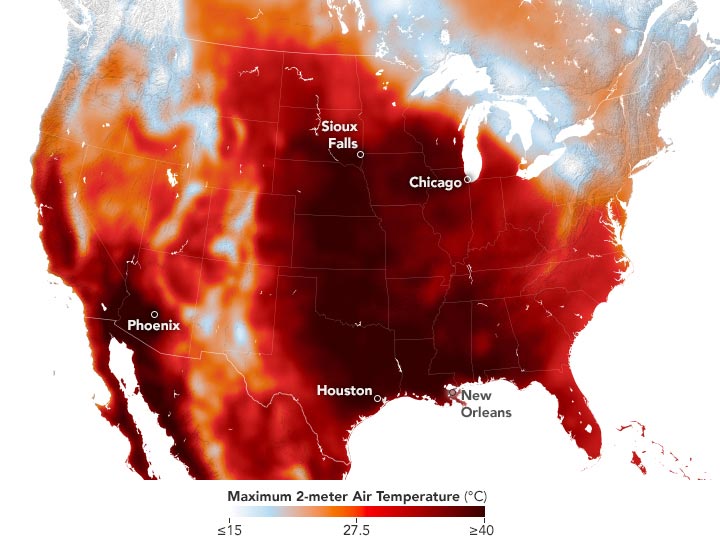

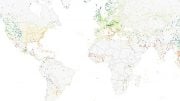
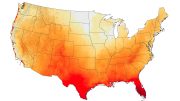


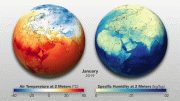
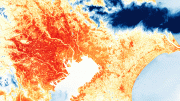

“The darkest reds indicate areas where temperatures exceeded 104°F (40°C).”
While that claim MAY be true, the only thing that can be claimed legitimately is that a model predicted that the temperatures exceeded 40°C; they were not actually measured and are not directly comparable to historical temperatures or what the local weather forecasters were reporting.
Interestingly, it seems that there is a recent trend to report the Heat Index rather than the measured temperature. That is probably a change for the better, long term. However, it subjectively gives the impression that we are suffering from anomalously high extreme temperatures recently, when we aren’t. It is a different measure than simple temperature.
“More than 100 million people MAY have been exposed to dangerous heat and humidity for multiple days, according to one analysis by The Washington Post.”
I find that to be a very curious statement. MAY? Were they or weren’t they? Why the uncertainty? Shouldn’t the NASA rep’ have said “potentially dangerous?” Are they speculating that people were on Summer vacation and weren’t home to experience the weather typical of an unspecified area of the US? Why the “may” caveat? Why does the article claim “More than 100 million people” when the headline for the Washington Post says “89 million people?”
I’m reminded of what Mark Twain quipped: “If you don’t read the newspaper, you are uninformed; if you do, you are misinformed.”
Heat dome, is that what we call August now? NASA doesn’t even mention summer, which it is right now in America by the way.
Now the people in these Northern states are going through what Texas goes through every summer and all of a sudden the dangers of humidity is in NASA’s research saying millions are in danger ??? It’s been 114 heat index in Texas , Arizona , New Mexico for months now , with absolute no rain in Texas for serveral months. When is the High Pressure system going to go away from Texas ?
I looked up those extreme red black areas. The temperatures there are forecast to be 98 to 102. More climate hype.
I just wanted to leave a comment so that all the comments on here were NOT left by ahole conservatives in denial.
Not everyone commenting is a conservative. You can trust me on that Don, if nothing else. However, neither science nor the climate cares about our politics.
It is interesting that you think that a comment that contributes nothing to the discussion is important enough to take the time to type in, only because it acknowledges a different opinion that you can’t discredit with facts. That makes it look like you are driven by your political beliefs rather than facts.
@Don Chump not everything has to be about politics, liberal.
It was so hot here in New Mexico that there were no bugs, no flying things, AND MOST ALARMINGLY NO LIZARDS anywhere to be found. When temps go over 100 now, you’ll be hard pressed to find insects. They are shutting down. Air temp is measured 6.5 feet up, but humans and animals we don’t live at that level. We live down on the ground, where the temperatures are even more extreme. In AZ in July, temperatures at ground level were 119, and people suffered burns to their skin if they fell onto pavement. Yes, people do fall down.
If you are not living in regions that are suffering extreme and persistent heat and have little water on top of it, then you won’t understand and you’re apt to say it’s just summer. It’s not.
Absolutely true, but these aren’t changes. Lizards hide under rocks in the heat; they’re ok and will be back, don’t worry. Even when I was a child in the late-holocene, people showed up to the emergency room with terrible burns on their feet from daring to walk barefoot on pavement. New Mexico is mainly airid desert, and for as long as people have lived there, temperatures often go above 100f. In places like Arizona’s Sun City, that weather is why retirees moved there, with a higher likelihood of falling.
I have spent a good deal of time in the desert. What I have discovered is that during the day one doesn’t see a lot of wildlife — except at springs or water holes where bees and humming birds are abundant.
Pavement hot enough to fry an egg is nothing new. That’s why it is an old saying. Maybe there is a reason that creatures that evolved in the African savanna walk upright instead of crawling on the ground.